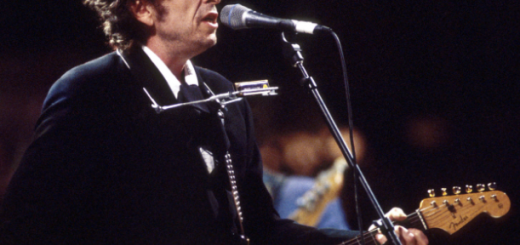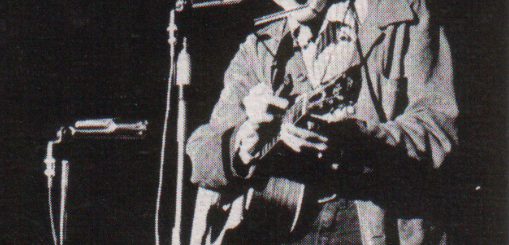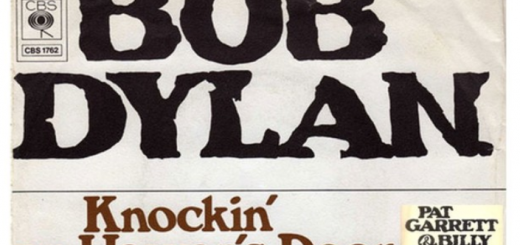Bob Dylan’s “Tempest” Lyrics Meaning
This creation of “Tempest” was inspired by one which the Carter Family came out with over half a century prior entitled “The Titanic”. Or put differently, this is Bob Dylan’s take on the infamous Titanic disaster of 1912, a maritime catastrophe that has fascinated audiences even into 21st century.
And considering that this is in fact Bob Dylan, he’s not going to spare words while putting his version of events across. In fact boasting of 45 verses and a runtime of approximately 14 minutes, “Tempest” is one of the longest songs the legendary musician has ever put out.
It has been pointed out that in these lyrics, Dylan did not set out to be historically accurate as much as to weave an interesting tale based on the Titanic. Indeed there are even parts of the song where he seemingly references characters from the ever-popular Titanic movie, a film which in and of itself is by and large fictional.
Analyzing the Lyrics of “Tempest”
So part of our approach in analyzing this song will be to take the ideas and intricacies mentioned in and, as much as reasonably possible, connect them to what actually happened during the sinking.
The “Pale Moon”
And for starters, we see that Dylan is intending to incorporate a lot of imagery into this piece. For instance, even if there was a “pale moon” that night, it likely didn’t have anything directly to do with the disaster. Rather by referencing it and the “Western town” which follows, it seems as if the vocalist is setting the stage by indicating the type of pride, if you will, that also contributed to the sinking of the “great ship”.
But that noted, the opening of “the pale moon rose in its glory”, as presented in “Tempest” is the same as The Titanic.
This idea is further buttressed in the second verse, where the Titanic is presented as, ideally speaking, “sailing into tomorrow, to a gilded age foretold”. Indeed at the time, the ship was heralded as some type of major feat of modern technology, being unsinkable even.
And it is also in the second verse where we are presented with the first hard fact of the song, which is this calamity having commenced on 14th August.
Now the next two verses are definitely poetic. They illustrate how the evening was leading up to the sinking. Of course Dylan himself was not there, so logically he based these recollections of the testimonies of people who were, as well as likely the aforementioned film.
And the way he presents it is as a lovely night where everyone, most notably the well-to-do onboard, were chillin’. But as for the poetic part, they did not actually know at the time that their deaths were imminent. And so it is in the fifth verse also, though said passage is devoid of any reference to death.
6th, 7th, 8th, 9th and 10th Verses
The sixth verse is one that we can say was directly inspired by the aforementioned “The Titanic”. For as we have noted in our analysis of that song also, the ‘dreaming watchman’ whom the Carter Family mentions doesn’t seem to have been an actual person. What he apparently represents is someone onboard the ship who had a vision, beforehand, of its sinking.
The seventh verse witnesses Dylan giving a shoutout to one Leo, i.e. Hollywood A lister Leo DiCaprio, i.e. the protagonist of the aforementioned Titanic film. Said movie was the most commercially-successful flick of all time for over a decade. That is to say that it is very popular and remains so to this day.
So it’s understandable as to why Bob would resort to referencing it despite its fictionality. This is apparently because when most people think of the Titanic these days their minds may go to the movie as opposed to the actual historical event.
And to make a long story short, the 7th to 10th verses read a lot like the movie itself. Here we have Leo doing his thing, and there’s a lady onboard whom he falls for at first sight. Then just like that, disaster strikes.
11th to 16th Verse
The 11th to 16th that follow detail all of the confusion surrounding the sinking, albeit now devoid of any mentions of Leo. Along the way Dylan drops a couple of historical tidbits, which may not be entirely accurate. For instance, even though he mentions ‘engines exploding’ in the process, the general consensus is that it was rather the coal boilers that did so.
The vocalist also mixes the scene with some powerful metaphors like ‘angels turning aside’. So in all he does paint a vivid, artistic picture of just how devastating the sinking was, with “dead bodies already floating” and all.
17th, 18th, 19th, 20th and 21st Verses
In the 17th verse the watchman is once again mentioned. And apparently he’s still dreaming of the ship sinking, even while it is actually taking place. Perhaps such is noted to introduce a bit of comic relief into the narrative. But it does lead to another character, one Wellington, being introduced in the following passage.
Considering that there does not appear to have been a Wellington associated with the Titanic, it is possible that such is the name of the watchman himself. And from the 18th to 21st verses, we see him making a “valiant” effort to deter death after being awakened from his slumber by the ship’s violent motions. And while making his way through the vessel, he witnesses all types of horrors.
22nd and 23rd Verses
And it is such sad scenes which highlight the 22nd and 23rd verses, with loved ones, i.e. “friends and lovers” as well as “mothers and their daughters” meeting their fates together. And so it was with “the rich man, Mister Astor”, who was in fact a real person. And that would be John Jacob Astor IV (1894-1912), who also happened to be the wealthiest individual amongst all the well-to-do aboard the Titanic.
The song depicts him, amidst the tragedy, of having “kissed his darling wife”, who at the time was Madeleine Astor (1893-1940). And as you can see by the year of her passing, she did survive the disaster. But as for John himself, he wasn’t as lucky. Or as the lyrics put it, he had no idea of knowing that sailing on the Titanic would “be the last trip of his life”.
25h, 26th and 27th Verses
The 25th verse then goes on to mention three dudes, “Calvin, Blake and Wilson”. The way this part of the story reads as if they were just chillin’, ‘gambling in the dark’, when all hell broke loose.
And break loose it did, as “brother rose up against brother” in the name of each man attempting to save his whole hide. And no, in reality the evacuation of the Titanic was not all chaos. If it were many of the 700 or so survivors, whom half were women and children, likely wouldn’t have lived to tell the tale.
Indeed according to people who were actually aboard the ship, there was no hysteria at all. So this idea of passengers wildin’ out, becoming “traitors” and “turncoats” as expounded on in the 26th and 27th verses, is likely one that that Bob Dylan got from the movie, which is known to have heavily dramatized the event.
28th, 29th, 30th and 31st Verses
Then the next three verses respectively bring three new characters into the equation. First there is “the bishop”, whom historically speaking may be a more sound representation of what transpired, as far as most of the men aboard were concerned, as he lent his hand ‘to helping all those in need’ (or in real life, women and children).
Next is “Davey the brothel keeper”. Considering that a number of rich men were on the ship, it is reasonable to believe that someone must have organized such services for those who desired. But anyway, Davey ‘dismisses his girls’ upon realizing that death is closing in.
Then Dylan references Jim Backus. Now Backus (1913-1989) was actually the actor who played Thurston Howell III on the classic sitcom Gilligan’s Island, which by the way was made decades after the Titanic disaster. And those familiar with the character of Thurston Howell know that he is extremely rich and behaves accordingly.
So we can conclude that “Jim Backus”, as mentioned, is meant to represent one of the wealthy men on board. And instead of saving his own behind by jumping on a lifeboat, he instead “gave his seat” to a “little crippled child”, i.e. engaged in an act of true selflessness, for the next verse reveals that death did indeed close in on him. But by this time his “heart was… at peace” in terms of accepting the inevitable.
32nd, 33rd, 34th, 35th and 36th Verses of “Tempest”
During the 32nd verse, Dylan seems to once again point to the irony of the situation. Well perhaps irony is not the best word here, but just the fact that people were dying left and right aboard what was actually a luxury vessel.
The 33rd verse then reintroduces Leo into the picture as well as a companion of his, Cleo. But the focus is more on Leo. The character proceeds to ‘lose his mind’, albeit in a good way. For as demonstrated in the 34th verse, he sacrifices his body in the name of trying to save others.
Subsequently the 35th verse is more akin to the beginning of the song, mixing this feeling of dread with relatedly colorful imagery, all of course pointing to the passengers of the Titanic being doomed.
But the 36th verse shows that the host stayed on post as long as he could, “pouring brandy”. He is presented similarly to the band that kept playing while the ship was sinking, as memorialized in The Titanic (as well as the movie). Or put differently, crew members like himself tried to make the best of the situation or at least ensure that people remained calm throughout. And as the tale indicates, he “was the last to go”.
The 37th Verse – The 41st Verse
And “there were many, many others” who came to an end likewise. Some, as the 37th verse explains, had “never sailed the ocean or left their homes before”. So perhaps the reason Dylan makes such a statement as the one in the previous sentence, beside it being inherently-saddening, is to show just how merciless the catastrophe was.
The dreaming watchman is then brought up for a third time in the next verse. It would appear one of the reasons for his numerous mentions is because he is also one of the heroes of the story, i.e. the person who “tried to tell someone” that calamity was forthcoming.
But it should also be noted that he is a character in The Titanic. So perhaps bringing him up so much is Dylan’s way of reminding the listener that “Tempest” was in fact derived from the Carter Family’s piece.
The 39th through 41st verses then focus on “the captain” of the ship. He is depicted as a man defeated. And he spends his final moments at his station reading the Book of Revelations and crying, basically.
42nd and 43rd Verses
Then the 42nd verse picks up on what is perhaps the thesis or most-recurrent idea in this whole story. And that is the fact that “the Reaper”, as manifested via the Titanic’s sinking, did not discriminate in terms of who or how many lives he took.
In the 43rd verse we get more into the reaction of the people on shore. And the news of the disaster, the magnitude of people who were horrifically lost in the process, of course shocks them.
And at the end of the day, in terms of trying to derive some type of spiritual understanding of the misfortune, the reading audience ultimately have to chalk it up to “the judgment of God’s hand” being unpredictable for real.
Final Verse of “Tempest”
The final verse of this lengthy narrative concludes with Dylan once again giving a shoutout to “the watchman”. By this point it becomes possible to theorize that he’s not even on the Titanic, but rather someone somewhere who dreamed of its wreck and lived to witness such transpire.
But either way he is quite an unfortunate figure nonetheless, for out “of all the things that [he] can be” dreaming about, he envisions something so horrible that actually comes true.
Meanwhile as for the title of the track, a tempest is of course a very violent storm. That said, it does not appear that the Titanic disaster was caused by any type of adverse weather condition, as alluded to in the first line of the song. So the “tempest” Dylan is referring to would be the actual disaster itself, i.e. the title being a metaphor for what happened.
What “Tempest” is all about
So conclusively, we would argue that the vocalist is for the most part regarding this tragedy as people have from the onset, as one of the most-catastrophic lessons ever in the dangers of human hubris. But even more so than focusing on whose fault it may or may not have been is him detailing the maddening loss of life, as well as numerous acts of heroism and bravery involved.
So whereas there may not be one definitive, conclusive lesson being put forth in this song, this is still a story for the ages, even stripped of the embellishments which the writer added therein. Or phrased differently, Dylan lent his hand to making an interesting historical story tale, which everyone already more or less knows, even more compelling.


“Tempest” Facts
Artist(s): Bob Dylan
Writing & Production: This was written and produced by Bob Dylan himself
Release: September 10 of 2012
Album/EP: “Tempest”
What musical genre is this classic?
“Tempest” is a folk song.

Did Bob Dylan release “Tempest” as a single?
No. It’s album (also called “Tempest”) produced only the following singles:
- “Early Roman Kings”
- “Duquesne Whistle”
The Actual Titanic Disaster of 1912
In the early years of 1900, the rivalry between some shipping lines had grown into a conquest to be the best. White Star Line was one of the shipping lines invested in this rivalry.
On May 31st, 1911, the White Star Line launched the ship RMS Titanic. Titanic was built in Belfast, Ireland. The process of building the ship began on 31st March 1909 and took about 14,000 employees to build.
Titanic was not the only ship being built at the time but it was considered different and the best amongst the other two, Olympic and Gigantic.
On April 5, 1912, almost a year after the launch of Titanic, she struck a large piece of freshwater ice floating in open water causing her to rupture and sink in the North Atlantic Ocean on her way to New York from Southampton.
The damage on the Titanic was about 300 feet long. The impact of the hit of the iceberg caused a flood immediately. An approximate number of 2,224 people were on board while over 1,500 of them lost their lives.
The disaster is reported to have taken place around 11:40 pm Sunday, 14th April and lasted for two hours and forty minutes into Monday, 15th April 1912.








